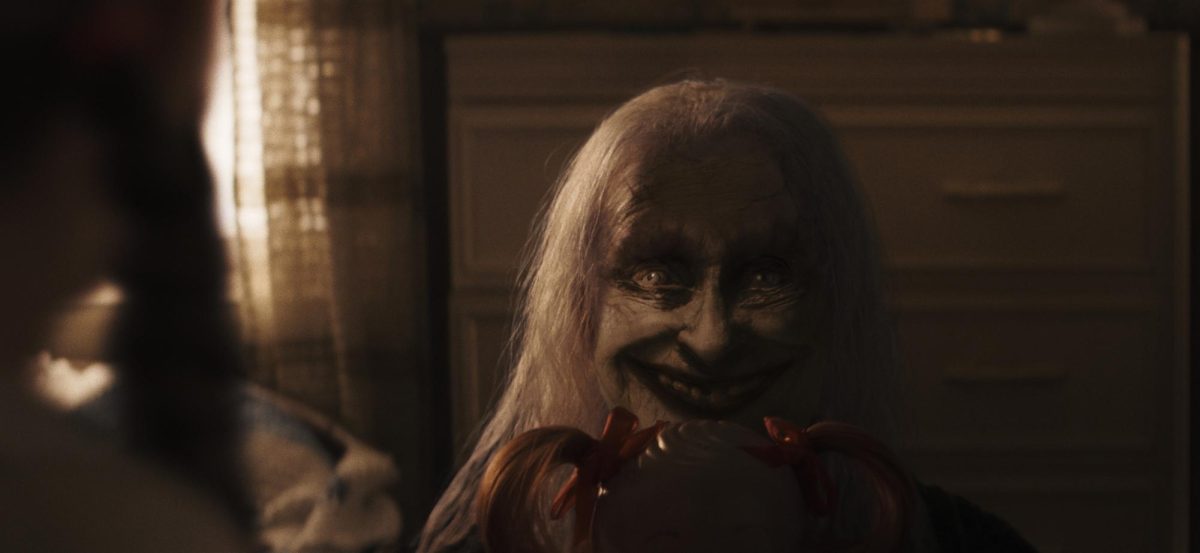
Warner Bros. Pictures/TNS
Empty and lifeless are a few words that describe “The Conjuring: Last Rites.” Ed and Lorraine Warren (Patrick Wilson and Vera Farmiga) are back on screen for the final movie and in action for their last documented case. While this series is coming to an end after 12 years, this may not have been the ending viewers were hoping for. Michael Chaves brings his take on the couple in his second director’s role in “The Conjuring” quadrilogy after previously directing “The Conjuring: The Devil Made Me Do It.”
This final movie in “The Conjuring” franchise is short of a clear plot, notable CGI and a decent ending.
Farmiga and Wilson, who are usually the heart of this series and get prominent screen time in past films, don’t this time around. Their daughter, Judy Warren (Mia Tomlinson), seemed to take the lead. After having cameos in most of the preceding movies, we begin to see a new side of the story. However, young Lorraine (Madison Lawlor), who may have had limited screentime, dominated her scenes entirely. During a complicated delivery of Judy, Lawlor delivers the line, “Heavenly Father, please bring her back,” consistently and with so much power.
Lorraine, who is known for her clairvoyant abilities, looks to have passed them on to Judy. A notable moment that Tomilson has on screen is when she sings a special song. Farmiga teaches her this tune to help fight the scary visions that surround her. Her acting through the anxiety was extremely powerful. When Tomilson was trying on wedding dresses, she began to have a vision in the dressing room and saw many versions of herself in the mirror, including a mirrored spirit trying to kill her. Her response to the horror she was dealing with was an out-of-body experience to watch.
Fast forward to 1986, a new family is in possession of the conduit mirror, which was previously haunting the Warrens, the Smurl family. The story continues to unfold, but predominantly in Judy’s life rather than the Smurls. This is quite different compared to the setup in other films in the series. Commonly, there is a balance between the affected family and the Warren family. However, in this movie, there is very minimal detail given on the affected family at hand. Compared to prior “The Conjuring” movies, families that are dealing with paranormal activities get more of a storyline. It was disappointing to not have much detail on the Smurl family and what all they go through.
The ending was quite empty. The Warrens did get the demonic presence out of the Smurl home by putting it in their artifact collection to keep it contained; there is limited information about who or what was connected to it. While Lorraine expresses that there were three spirits she sensed in the house, she knew there was something more there, but was unable to see it. She states this, but it is never revealed what the bigger picture was and what else was connected to the Pennsylvania land. There were also many parallels near the end as Judy was struggling to get a hold on her clairvoyant abilities that end up amounting to nothing by the end of the movie. Writers tried to end the story on a high note with Judy getting married to Tony Spera (Ben Hardy). To add onto the soft blown ending, the film didn’t seem to give the Warrens much of an ending that was clear. Lorraine said she had a vision for their “happy ending” but it was not set in stone, which felt unresolved.
Despite their struggle to maintain a comprehensible plot, the cinematography brought by Eli Born was the highlight of the film. Many shots helped put in perspective the Warrens, while at the same time including the view of the ghosts. Symbolic shots involved bloody scenes to overwhelm the audience with gore and shock. The color contrast between the bright red blood to dark muted tones was also prominent in many scenes. A symbolic shot Born worked on is when Lorraine uses her gift to hear the history of a room, and a red light surrounds her, symbolizing the evil that took place.
On the other hand, the CGI in this film was below par. What was supposed to look like scary ghosts of the past was missing the whole element of fear. Specifically, the grandma who was haunting the house had an appearance and there was so much missing. She appeared and was more funny-looking than frightening. This has not been an issue in previous installments to the series. Laughter was heard more in the theater than screams.
While the scenes were beautifully orchestrated, the fear factor of this movie was lacking. In past projects, there were frightening sights of monsters; however, the new demons that are presented had off-putting CGI effects. This didn’t seem like the Ed and Lorraine that viewers have come to love. Needless to say, this ending to “The Conjuring” did not feel like it had the true essence of the series in it and was not a good way to say goodbye to these beloved characters.